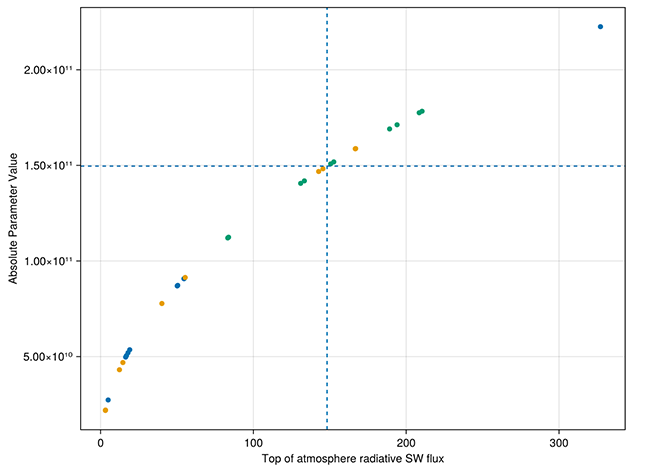
Projects
Climate Computing
Model Calibration
PI: Tapio Schneider, Divisions of Geological and Planetary Sciences (GPS) and Engineering and Applied Sciences (EAS)
SASE: Nat Efrat-Henrici, Scholar
Climate change profoundly affects ecosystems, economies, and communities around the world. To address this, the Climate Modelling Alliance (CliMA) is creating a state-of-the-art climate model that can scale on high-performance computing systems and learn from a wide array of data sources. Through data assimilation, the model enhances its accuracy and reliability by integrating observations, enabling it to simulate physical processes and diverse climate conditions more precisely. This comprehensive model includes components for the atmosphere, land, and ocean.
As part of the Schmidt Academy, the Scholar developed a recipe-builder package designed to allow research scientists to create scalable and reproducible data assimilation pipelines on different high-performance computing systems. The Scholar has used this package to calibrate the atmospheric model with averaged climate data, including air temperature, radiation, and precipitation. Accurately simulating radiation and precipitation is crucial for long-term climate modeling, particularly in different emissions scenarios.

Results from an experiment using the atmospheric model, calibrating the astronomical unit (distance to the Sun) to the amount of incoming shortwave radiation. This required four iterations with ten simulations each iteration. The plot displays the relationship between the parameter and the amount of shortwave radiation.
Looking ahead, this package will be used to calibrate CliMA’s land model with data from FLUXNET sites. It is already employed in some of CliMA’s coupled model configurations and will ultimately calibrate approximately one hundred model parameters in a high-resolution configuration. This approach is vital because simply increasing the model's horizontal resolution does not account for small-scale processes. However, learning from real-world observations enables the model to simulate long-term climate scenarios more accurately.
ClimaCalibrate: https://github.com/CliMA/ClimaCalibrate.jl
ClimaAtmos: https://github.com/CliMA/ClimaAtmos.jl